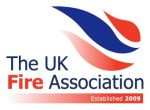When it comes to tackling fires involving ordinary combustibles like paper, wood, textiles, and furniture, nothing is as straightforward and reliable as a water fire extinguisher.
In the UK, water extinguishers remain one of the most widely used and recognised types of portable firefighting equipment.
In this guide, we’ll explain what they are, how they work, British Standards for installation and servicing, and how ESI can help keep your premises safe and compliant.
What Are Water Fire Extinguishers For?
Water fire extinguishers are designed for use on Class A fires—fires involving solid combustible materials such as paper, cardboard, fabric, and wood.
They work by cooling the burning material below its ignition temperature, stopping the fire from spreading and eventually extinguishing it completely.
Where Should They Be Used?
Water extinguishers are ideal for offices, schools, retail spaces, public buildings, and anywhere you have large amounts of combustible material.
However, they should never be used on fires involving flammable liquids (Class B), cooking oils and fats (Class F), gases (Class C), or electrical equipment—water can conduct electricity, posing serious safety risks.
British Standards and Compliance
In the UK, water fire extinguishers must comply with BS EN 3, which covers requirements for colour coding, performance, design, and testing.
Extinguishers also fall under BS 5306-3, which specifies requirements for commissioning and servicing portable fire extinguishers.
Commissioning New Water Fire Extinguishers
When you buy a new extinguisher, it must be commissioned on site by a competent person.
This process involves:
- Checking the extinguisher for damage or defects.
- Confirming the correct weight and pressure.
- Applying the correct maintenance label and record.
- Ensuring the extinguisher is installed in the correct location and easily accessible, with appropriate mounting brackets or stands.
Commissioning ensures your extinguisher is fit for purpose and compliant with UK fire safety regulations.
Water Fire Extinguisher Servicing Requirements
According to BS 5306-3, extinguishers should be serviced at least once annually by a qualified technician. This annual service includes checking:
- Pressure gauge readings.
- Hose and nozzle condition.
- Weight and internal pressure.
- Condition of the body and components.
- Legibility of labelling and instructions.
Every five years, water extinguishers also require an extended service, which involves completely discharging, inspecting, and refilling or replacing the unit.
Signage Requirements
Fire extinguishers must have clear and visible signage indicating:
- Type of extinguisher.
- The classes of fire it can be used on.
- Any restrictions on use (e.g., not for electrical fires).
This is also covered under UK fire safety law and helps ensure that in an emergency, anyone can quickly identify and use the correct extinguisher safely.
How ESI Can Help
At ESI, we take fire safety seriously and offer a complete range of services for water fire extinguishers:
- Supply: We provide BS EN 3-compliant extinguishers from trusted manufacturers, ensuring quality and reliability.
- Install: Our qualified engineers install and commission extinguishers in the right locations according to your fire risk assessment.
- Maintain: We carry out annual servicing, extended servicing, and provide detailed maintenance records to keep you compliant with BS 5306-3.
- Decommission: When extinguishers reach the end of their life, we safely decommission and remove them.
- Recycle: We responsibly recycle old extinguishers in line with environmental standards.
Stay Safe and Compliant
Fire safety is not something you can set and forget. Choosing the right extinguishers, ensuring they’re properly installed, serviced, and replaced when needed is critical.
At ESI, we help businesses, landlords, and property managers stay compliant and protect their people and property.
Get in touch today to arrange a free site survey or talk to us about water fire extinguishers. Your safety is our priority.









